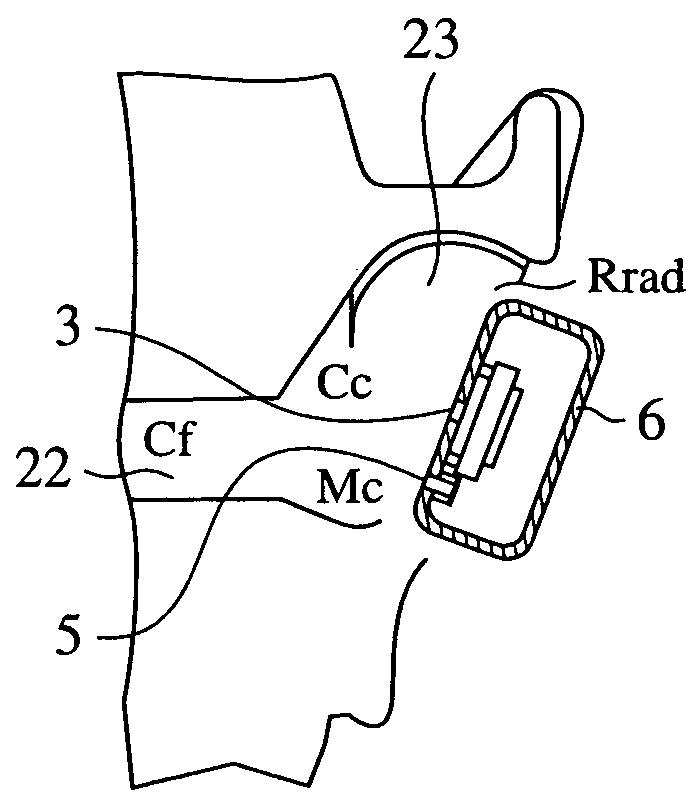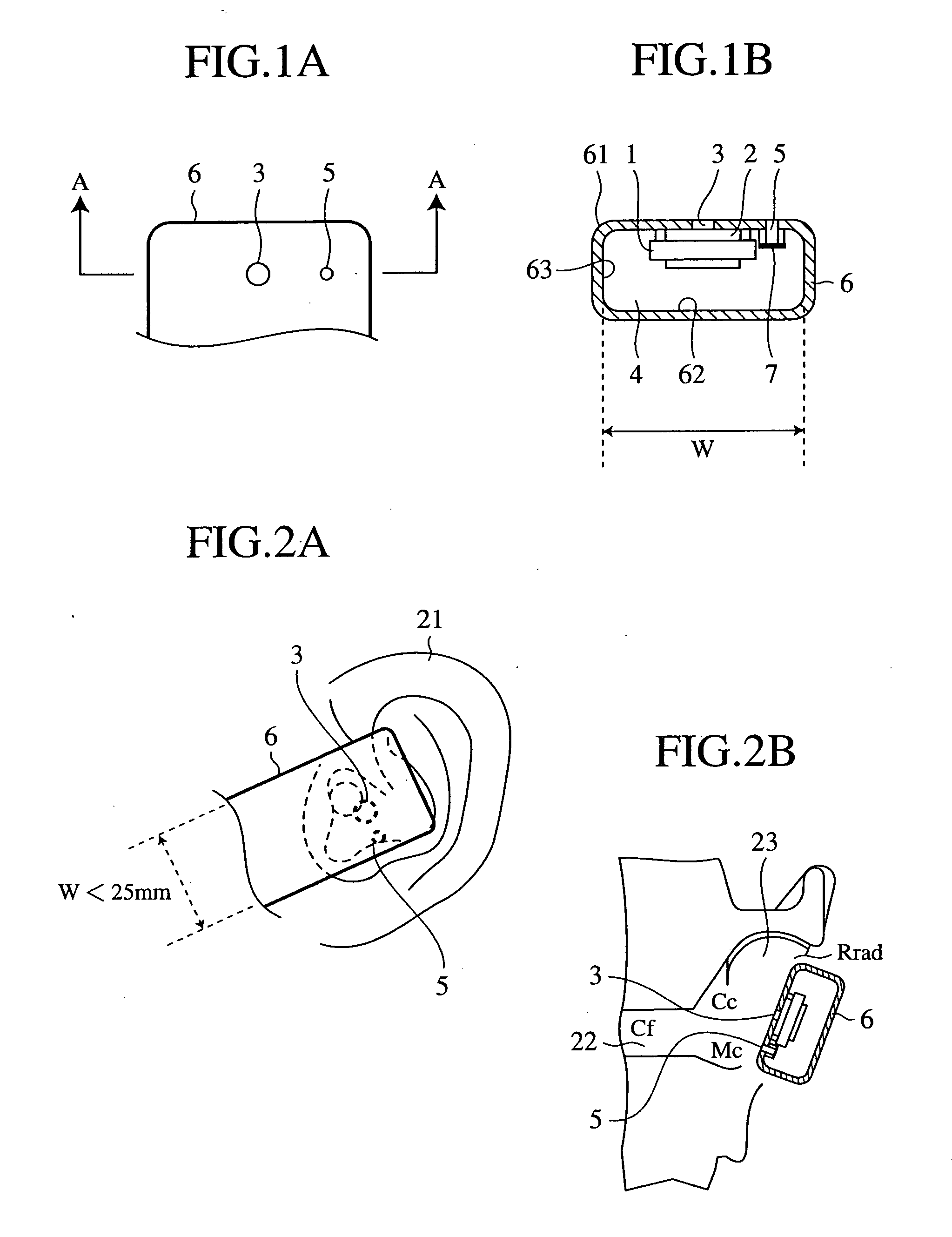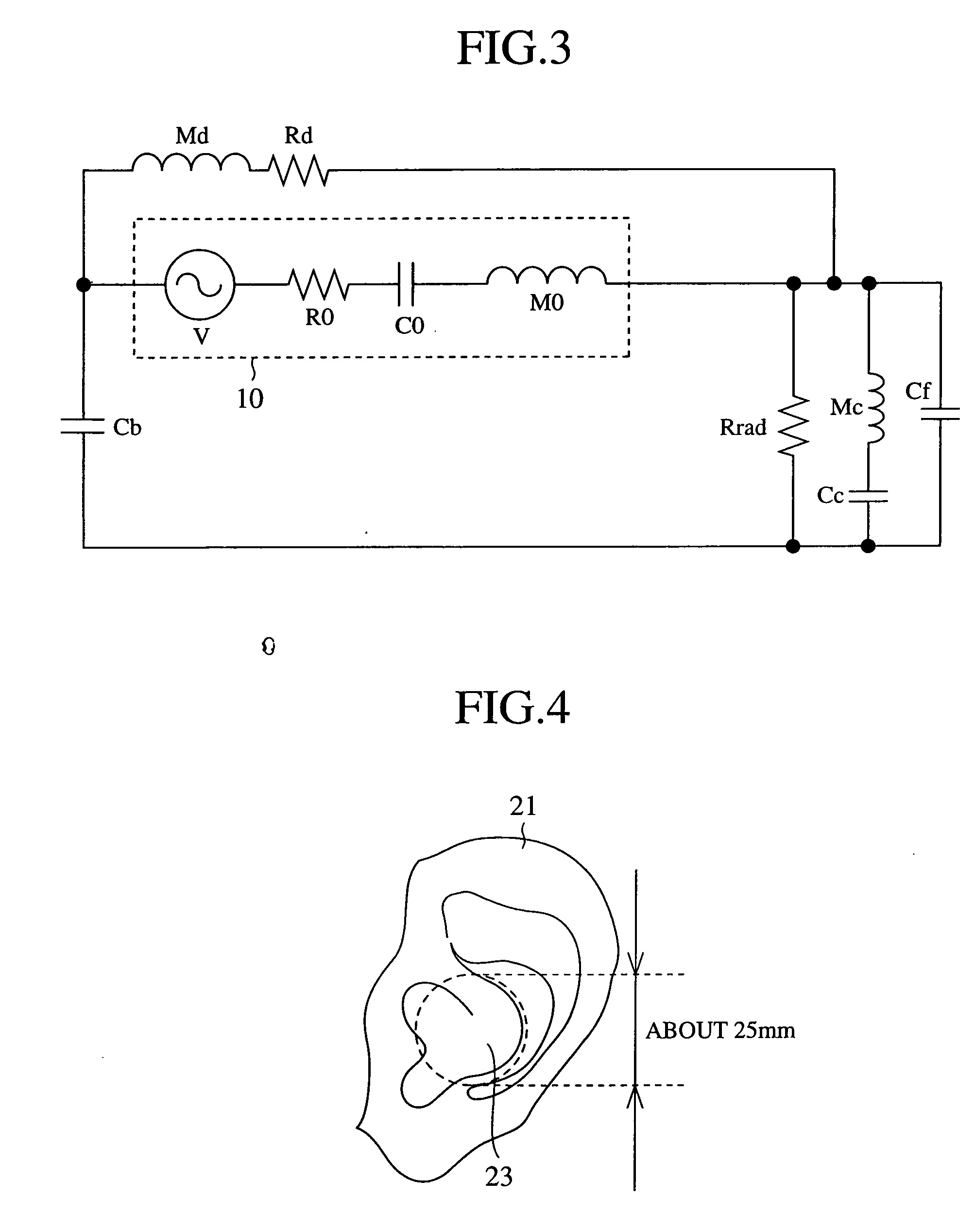Portable accoustic apparatus
a portable, acoustic technology, applied in the direction of deaf-aid sets, telephone set constructions, earpiece/earphone attachments, etc., can solve the problems of reducing the mass, deteriorating the output sound pressure characteristics, and difficult to adapt to the compact acoustic apparatus intended for portable use, etc., to reduce the minimum resonance frequency f0, stable frequency characteristics, and small characteristic variations
- Summary
- Abstract
- Description
- Claims
- Application Information
AI Technical Summary
Benefits of technology
Problems solved by technology
Method used
Image
Examples
embodiment 1
[0026]FIGS. 1A and 1B are a front view and a cross-sectional view showing a partial structure of a portable acoustic apparatus of an embodiment 1 in accordance with the present invention. FIGS. 2A and 2B are diagrams illustrating a usage state of the portable acoustic apparatus as shown in FIGS. 1A and 1B, and FIG. 3 is a circuit diagram showing an acoustic equivalent circuit corresponding to FIGS. 1A and 1B, and FIGS. 2A and 2B. In these figures, the same reference numerals as those of FIGS. 6-8 designate the same or like portions.
[0027]FIGS. 1A and 1B show an acoustic converting element 1 attached to the inside of a sound outlet 3 of the housing 6 of the portable acoustic apparatus. The housing 6 has a cylindrical or hollowed prism-like outer casing 63, the minimum internal width W of which is set at a size smaller than the standard diameter of the human concha. The front wall 61 of the housing 6 has the sound outlet 3. The acoustic converting element 1 is fixed in the housing 6 ...
embodiment 2
[0034] The foregoing embodiment 1 assumes that the minimum inner width of the rectangular outer casing of the housing 6 is less than the standard diameter of the human concha. In the present embodiment 2, it will be described that a housing with a minimum inner width equal to or greater than the standard diameter can function as that of the foregoing embodiment 1.
[0035]FIGS. 5A and 5B are diagrams illustrating a usage state of the portable acoustic apparatus of the embodiment 2 in accordance with the present invention. Its internal structure will be described with reference to FIGS. 1A and 1B. The minimum inner width W of the outer casing 63 of the housing 6 is assumed to be equal to or greater than the standard diameter of the human concha of 25 mm. In addition, the distance between the center of the sound outlet 3 and the outer casing 63 of the housing 6 is made less than half the standard diameter of 12.5 mm at some part. Furthermore, a duct 51 communicating to the outside of th...
PUM
 Login to View More
Login to View More Abstract
Description
Claims
Application Information
 Login to View More
Login to View More - R&D
- Intellectual Property
- Life Sciences
- Materials
- Tech Scout
- Unparalleled Data Quality
- Higher Quality Content
- 60% Fewer Hallucinations
Browse by: Latest US Patents, China's latest patents, Technical Efficacy Thesaurus, Application Domain, Technology Topic, Popular Technical Reports.
© 2025 PatSnap. All rights reserved.Legal|Privacy policy|Modern Slavery Act Transparency Statement|Sitemap|About US| Contact US: help@patsnap.com



